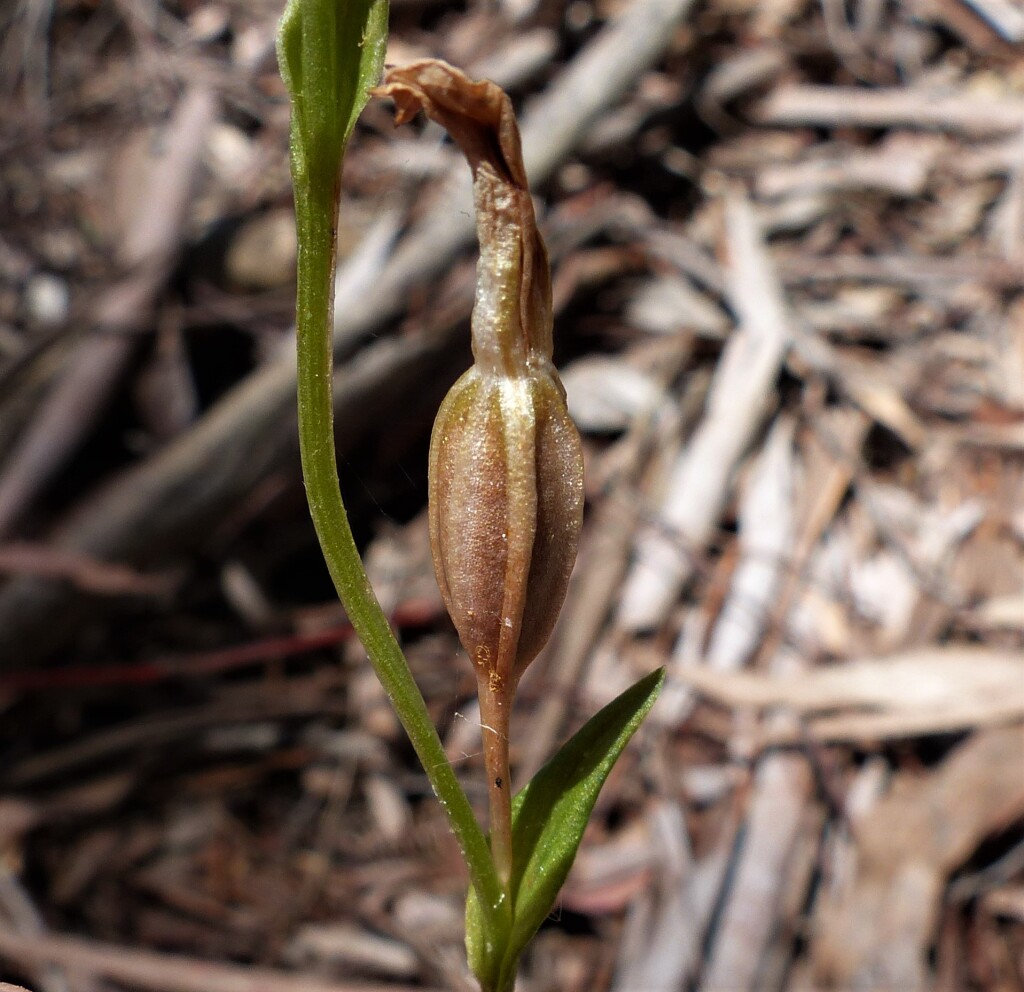Pterostylis melagramma
D.L.JonesFlowering plant 10–80 cm tall, stem leaves 5–7, spreading, linear-lanceolate, 2–8 cm long, 3–10 mm wide. Rosette leaves 3–6, linear to linear-ovate, 1.3–5 cm long, 4–11 mm wide. Flowers 1–20, 13–15 mm long, shiny, translucent green with indistinct darker green stripes, sepal tips brownish; galea decurved in the distal third; dorsal sepal with an acuminate apex; lateral sepals deflexed, conjoined part narrowly elliptic, 11–13 mm long, 6–8 mm wide, free points 3–4 mm long, parallel or slightly divergent; petals slightly falcate, basal flanges small, apex obtuse. Labellum ovate-oblong, 5–6.5 mm long, c. 2.5 mm wide, cream to yellowish green or pale brownish with a darker basal mound and brown to black central stripe, covered with numerous, short, transparent bead-like cells, longer and hair-like at base, apex attenuate, notched. Flowers Jun.–Nov.
LoM, Wim, GleP, VVP, VRiv, MuF, GipP, OtP, WaP, Gold, CVU, GGr, DunT, NIS, EGL, EGU, WPro, HSF, HNF, OtR, Strz, MonT, HFE, VAlp. Also SA, Tas. Widespread and common in higher rainfall areas, often in moist open-forest, woodland and coastal scrub, on well-drained soils.
Jones, D.L. (1994). Pterostylis. In: Walsh, N.G.; Entwisle, T.J., Flora of Victoria Vol. 2, Ferns and Allied Plants, Conifers and Monocotyledons, pp. 798–830. Inkata Press, Melbourne.
 Spinning
Spinning

